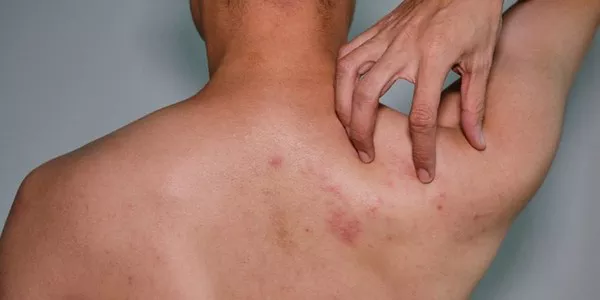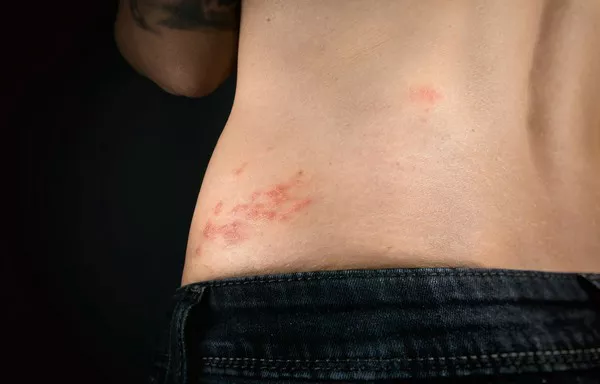Back pain is a common complaint among adults, often attributed to muscle strain, poor posture, or degenerative conditions such as osteoarthritis. However, one lesser-known cause of back pain is shingles, a viral infection caused by the varicella-zoster virus. This virus is also responsible for chickenpox, which can reactivate later in life to cause shingles. Understanding the connection between back pain and shingles can aid in accurate diagnosis and effective management of this painful condition.
Shingles and Its Symptoms
Shingles, medically known as herpes zoster, is characterized by a painful rash that typically appears on one side of the body or face. It occurs when the varicella-zoster virus, which remains dormant in the body’s nerve tissues after an individual has recovered from chickenpox, reactivates. The exact cause of this reactivation is not fully understood, but it is believed to be related to a weakened immune system, stress, or aging.
The primary symptom of shingles is a painful, blistering rash. However, the condition can also cause a range of other symptoms, including fever, headache, fatigue, and sensitivity to light. One of the most significant symptoms is pain, which can be severe and debilitating.
The Nature of Shingles Pain
Shingles pain, also known as postherpetic neuralgia (PHN) when it persists after the rash has healed, is a distinctive type of neuropathic pain. This pain results from nerve damage caused by the virus as it travels along the nerve fibers to the skin. Patients often describe this pain as burning, throbbing, or stabbing, and it can be triggered by the lightest touch, such as clothing brushing against the skin.
SEE ALSO: Is Chickenpox Truly Related to Herpes?
Back Pain as a Symptom of Shingles
While shingles can affect any part of the body, the most common areas are the torso and the face. When shingles affects the torso, it often involves the nerves that branch out from the spine, leading to symptoms such as back pain. This back pain can precede the appearance of the rash by several days, making it a diagnostic challenge.
Mechanisms of Shingles-Related Back Pain
Back pain associated with shingles can be attributed to several mechanisms:
1. Nerve Inflammation and Damage: The reactivation of the varicella-zoster virus causes inflammation in the affected nerves. This inflammation can lead to significant nerve damage, which manifests as intense pain along the path of the nerve. When the affected nerve branches from the spine, this pain can be felt in the back.
2. Referred Pain: Pain from shingles is often referred, meaning it is perceived in areas other than where the actual damage occurs. This happens because the nerves affected by the virus are connected to various parts of the body. For instance, if the virus reactivates in the thoracic nerves, the pain can be referred to the back, mimicking other conditions like musculoskeletal issues or kidney problems.
3. Muscle Spasms: Shingles pain can cause muscle spasms, further contributing to back pain. These spasms are a reflex response to the irritation of the nerves and can exacerbate the discomfort experienced by the patient.
Diagnosing Shingles-Related Back Pain
Diagnosing back pain as a symptom of shingles can be challenging, especially if the characteristic rash has not yet appeared. Healthcare providers need to take a thorough patient history and conduct a physical examination to identify potential causes of back pain. Key diagnostic steps include:
1. Patient History: Understanding the patient’s medical history, including any prior episodes of chickenpox or shingles, can provide crucial clues. Patients may report a history of prodromal symptoms such as tingling, itching, or localized pain before the appearance of the rash.
2. Physical Examination: A physical exam can help identify the presence of a rash or blisters, which are indicative of shingles. Even if the rash is not yet visible, signs of skin sensitivity or localized pain along a specific nerve path can suggest the diagnosis.
3. Laboratory Tests: In some cases, laboratory tests such as polymerase chain reaction (PCR) or direct fluorescent antibody (DFA) testing of lesion samples can confirm the presence of the varicella-zoster virus.
Treatment and Management
The management of back pain associated with shingles focuses on addressing both the viral infection and the pain itself. Early treatment is crucial to reduce the severity and duration of symptoms.
Antiviral Medications
Antiviral medications, such as acyclovir, valacyclovir, and famciclovir, are the mainstay of treatment for shingles. These drugs help to reduce the replication of the virus, thereby shortening the duration of the infection and decreasing the severity of symptoms. For maximum effectiveness, antiviral therapy should be initiated within 72 hours of the onset of the rash.
SEE ALSO: How Long Does Nausea Last with Shingles
Pain Management
Effective pain management is essential for patients with shingles-related back pain. Treatment options include:
1. Analgesics: Over-the-counter pain relievers such as acetaminophen and ibuprofen can help manage mild to moderate pain. For more severe pain, prescription analgesics such as tramadol or opioids may be necessary.
2. Neuropathic Pain Medications: Medications specifically targeting neuropathic pain, such as gabapentin or pregabalin, can be particularly effective for shingles-related pain. These drugs help to stabilize nerve activity and reduce pain signals.
3. Topical Treatments: Topical treatments such as lidocaine patches or capsaicin cream can provide localized pain relief. These treatments work by numbing the affected area or depleting substance P, a neurotransmitter involved in pain signaling.
4. Corticosteroids: In some cases, corticosteroids may be prescribed to reduce inflammation and nerve swelling, although their use is somewhat controversial and should be carefully considered by the treating physician.
Postherpetic Neuralgia Management
For patients who develop postherpetic neuralgia, long-term pain management strategies are necessary. This can include the continued use of neuropathic pain medications, as well as other therapies such as:
1. Antidepressants: Certain antidepressants, particularly tricyclic antidepressants like amitriptyline, can be effective in managing chronic neuropathic pain.
2. Nerve Blocks: In cases of severe pain, nerve blocks or injections of anesthetic agents near the affected nerves can provide significant relief.
3. Physical Therapy: Physical therapy can help patients manage muscle spasms and improve their overall function and mobility.
Prevention
Preventing shingles is an important strategy for reducing the incidence of shingles-related back pain. Vaccination is the most effective way to prevent shingles and its complications.
Shingles Vaccination
Two vaccines are available to protect against shingles: Zostavax and Shingrix. Shingrix is the preferred vaccine due to its higher efficacy and longer-lasting protection.
Zostavax: An older vaccine that uses a live, attenuated form of the varicella-zoster virus. It is administered as a single dose and is recommended for adults aged 60 and older.
Shingrix: A newer, recombinant vaccine that does not contain live virus. It is administered as a two-dose series and is recommended for adults aged 50 and older. Shingrix has been shown to be more than 90% effective at preventing shingles and postherpetic neuralgia.
General Health Measures
In addition to vaccination, maintaining a healthy immune system can help reduce the risk of shingles reactivation. This includes:
- Healthy Diet: A balanced diet rich in vitamins and minerals supports overall immune function.
- Regular Exercise: Physical activity helps to boost the immune system and reduce stress.
- Stress Management: Chronic stress can weaken the immune system, so effective stress management techniques such as mindfulness, meditation, or counseling can be beneficial.
Conclusion
Back pain can be a perplexing symptom with a wide range of potential causes. When it occurs as a result of shingles, timely diagnosis and treatment are essential to alleviate pain and prevent complications. Understanding the mechanisms by which shingles causes back pain, along with recognizing the early signs and symptoms of the infection, can aid healthcare providers in delivering effective care. Prevention through vaccination remains the best strategy for reducing the burden of shingles and its associated pain, ensuring better health outcomes for those at risk.
Related Topics:

























